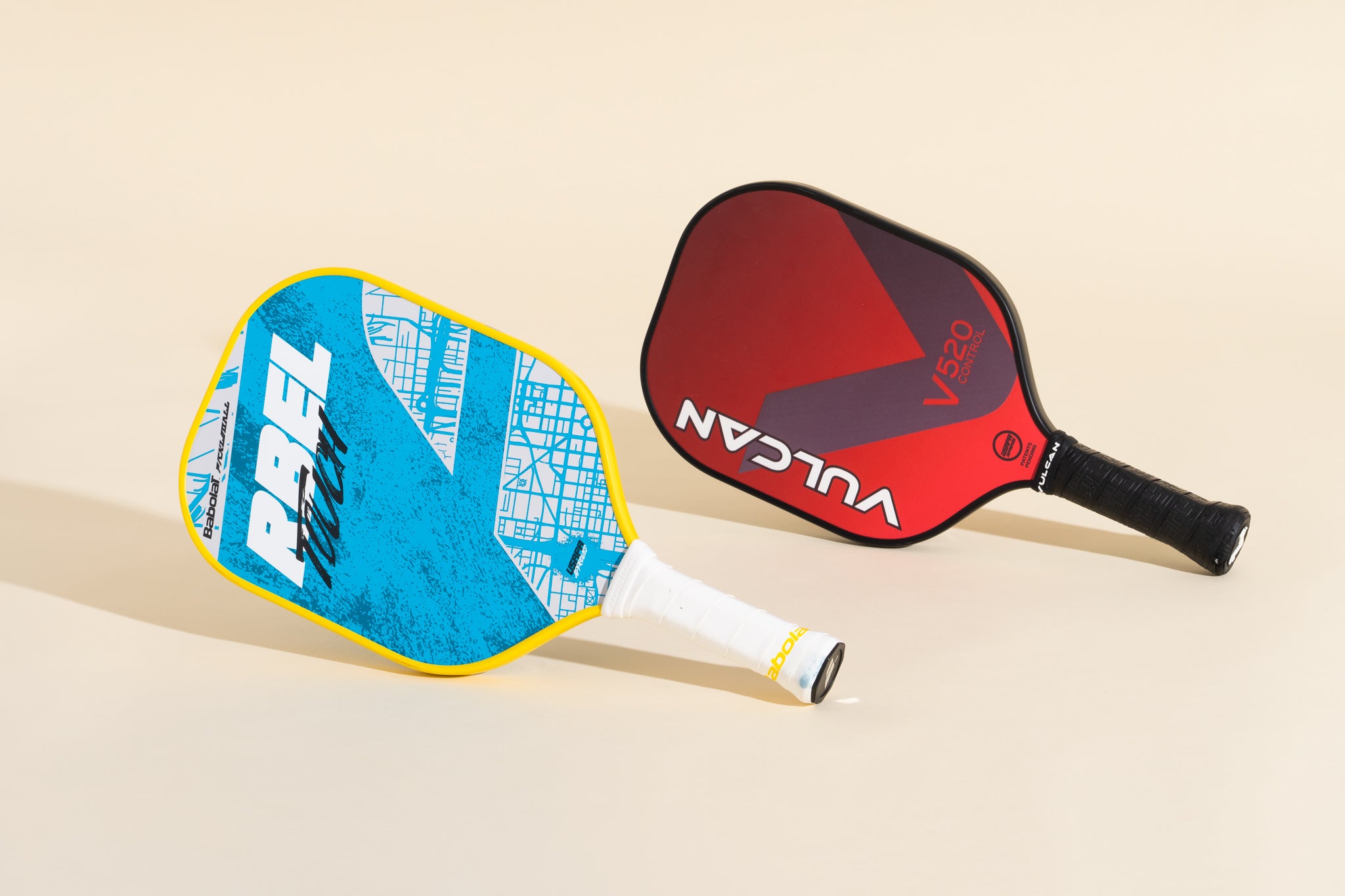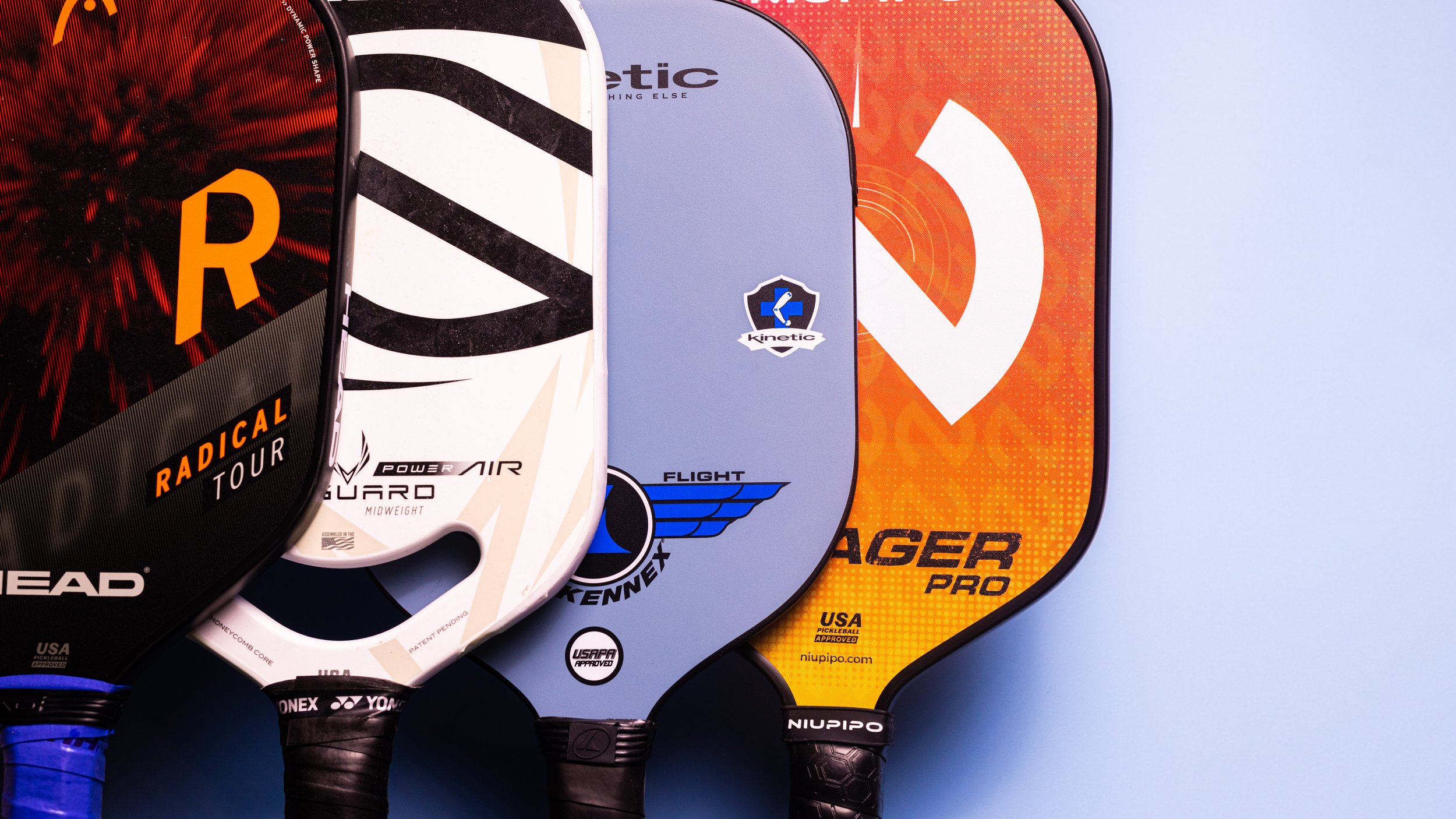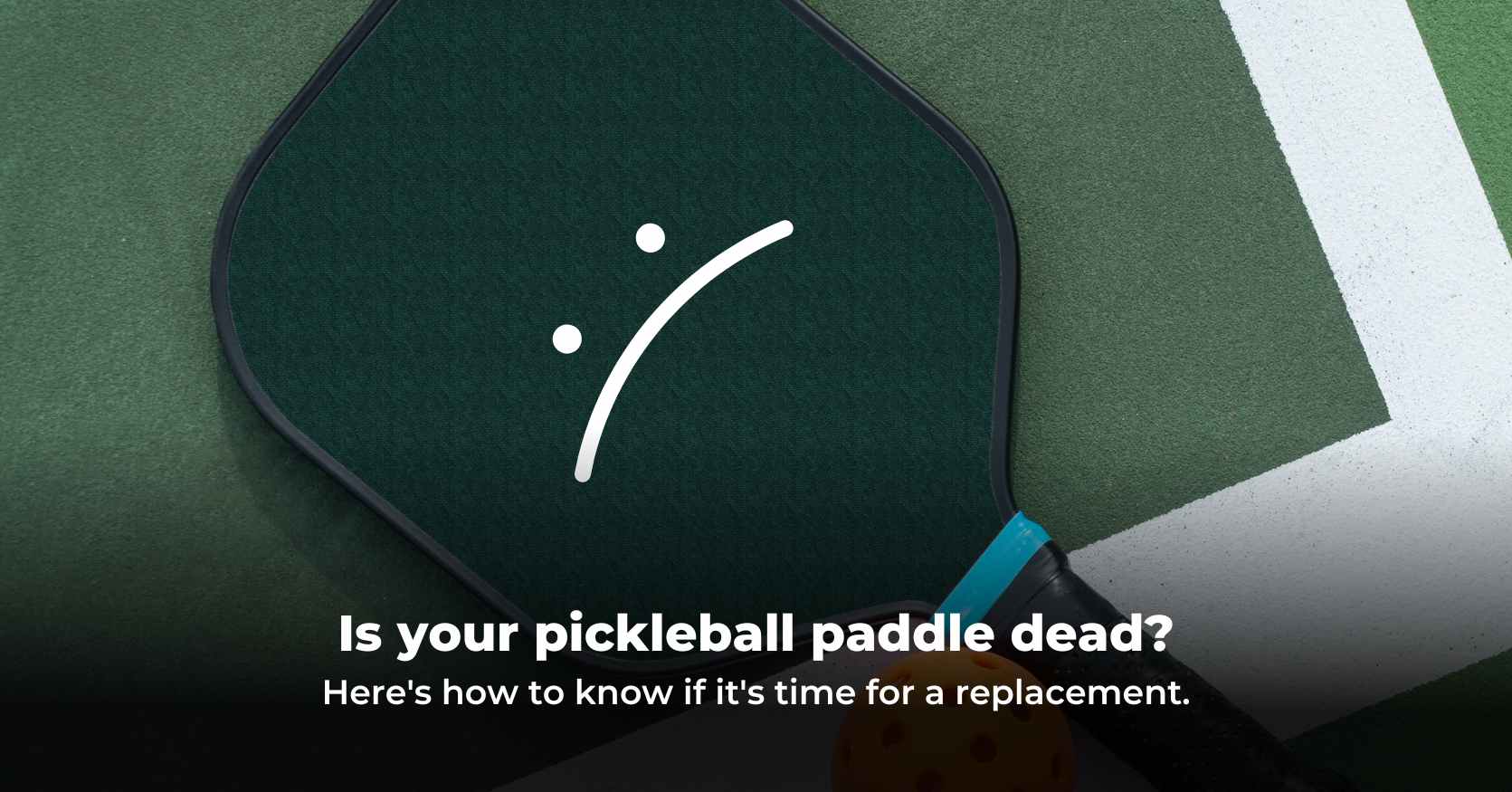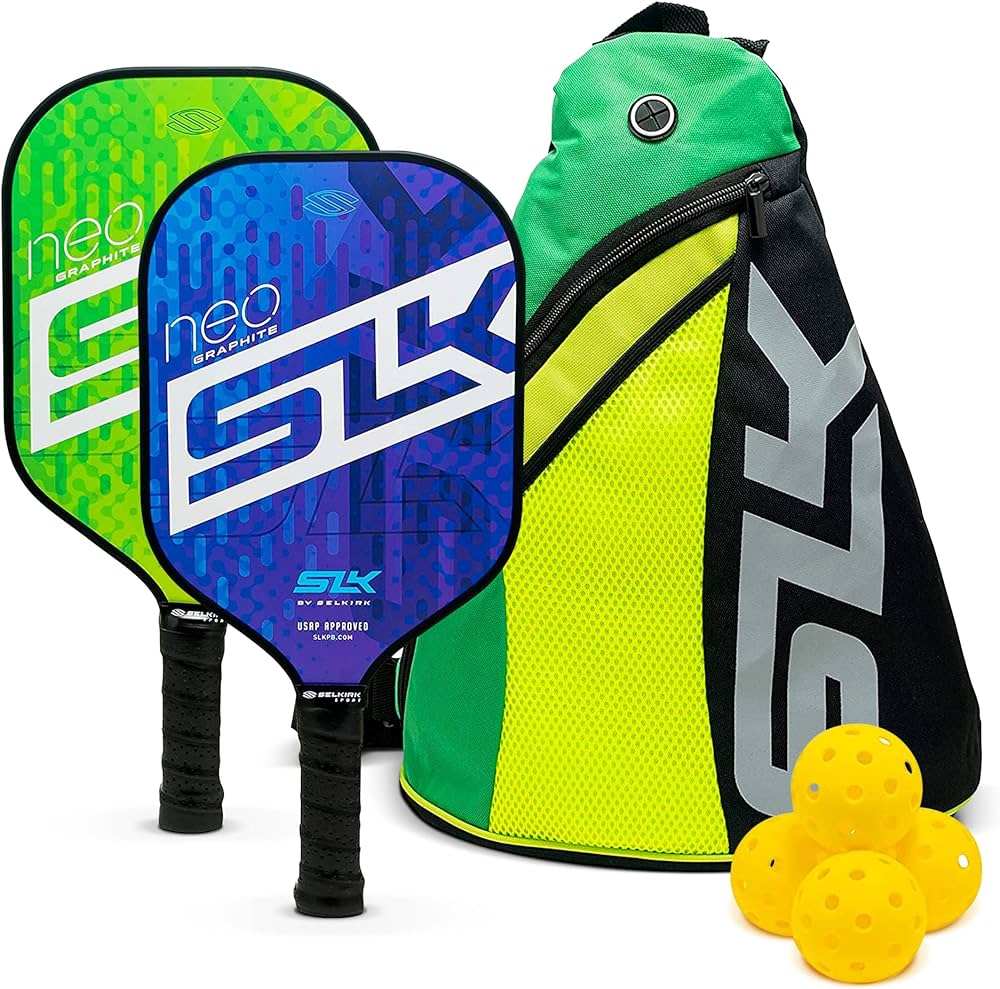How long do Pickleball paddles last: Maximizing Your Enjoyment
Pickleball paddles, like any other sports equipment, have a finite lifespan. Whether you’re a seasoned player or a curious beginner, there’s always that looming question: “How long do pickleball paddles last?” Understanding the factors that affect their durability and implementing proper care can maximize their longevity, saving you money and ensuring a consistent and enjoyable game. This article dives deep into everything you need to know about the lifespan of a pickleball paddle and how you can stretch its usability to the max.

How long do pickleball paddles last: What Impacts Durability

Material
When it comes to pickleball paddles, the material of construction plays a crucial role in determining the lifespan.
- Wood: Traditionally, pickleball paddles were made from wood. These paddles are often heavier and generally less durable. While they can be a cost-effective option for beginners, their relatively shorter lifespan and limited performance features make them a less popular choice for serious players.
- Composite: Composite paddles are usually made from a mix of fiberglass, polymer, and other materials. They strike a balance between durability and performance. They’re lighter than wood paddles and offer better control and power. However, their lifespan can vary significantly depending on the quality of materials used and the frequency of play.
- Graphite/Carbon Fiber: Graphite or carbon fiber paddles are on the higher end of both performance and durability. These paddles are lightweight, strong, and provide excellent ball control and power. Although they are pricier, the investment often pays off in terms of lifespan and gameplay quality.
Each material comes with its unique set of pros and cons. For example, while wood paddles may wear out faster, composite and graphite paddles can endure more stress and last longer, especially underconsistent play.
Intensity of Play
Not all players wear out their paddles at the same rate.
- Recreational Players: Those who play occasionally, let’s say once or twice a week, might find their paddles lasting a couple of years. The reduced frequency of usage translates into less wear and tear.
- Competitive Players: On the contrary, competitive players, who may play multiple times a week and often engage in aggressive rallies, will likely see their paddles wear out faster. For these players, a high-quality paddle might last between 1 to 2 years.
Different playing styles also matter. An aggressive player who slams the ball with immense force will obviously put more strain on their paddle compared to a player who focuses on controlled, finesse shots.
Environmental Factors
Environmental conditions can be subtle killers when it comes to paddle longevity.
- Extreme Temperatures: Both extreme heat and cold can take a toll on paddle materials. Heat can cause the bonding agents and composite materials to deteriorate, while extreme cold can make them brittle and prone to breaking.
- Humidity: Moist environments can affect both the paddle’s face and the grip. Over time, a constantly moist paddle can experience warping and other structural issues.
- Storage Conditions: How you store your paddle matters a great deal. A paddle left in the trunk of a car during a hot summer day will degrade faster than one kept in a climate-controlled environment.
Proper storage can act like a protective shield, prolonging your paddle’s usable life. Using paddle covers or bags can help minimize environmental damage.
Paddle Care
Caring for your paddle is akin to caring for a precious asset:
- Regular Cleaning: Make it a habit to wipe down your paddle after each game. Use a damp cloth to remove sweat and dirt from the paddle face and grip. This simple routine maintenance can add significant longevity to the paddle.
- Replacing Components: Don’t hesitate to replace the grip when it starts wearing out. A sturdy grip not only improves your play but also protects the internal structure of the paddle.
- Using Paddle Covers: Investing in a good quality paddle cover can prevent incidental damage from bumps and scratches and protect the paddle from environmental elements.
Knowing these factors gives you the power to significantly extend the lifespan of your pickleball paddle, making each game as enjoyable as the last.
Recognizing Signs of a Worn-Out Paddle

Performance Changes
After months or years of play, you may notice that your paddle doesn’t perform as it used to. The changes can be subtle but impactful.
- Ball Control: A worn-out paddle often struggles with ball control. You might find that the ball doesn’t go where you intend it to, affecting your accuracy.
- Spin: The ability to apply spin effectively diminishes as the paddle wears out. The ball might not spin as much, potentially costing you points in a game.
- Power: Over time, the power you can generate with each stroke may lessen. A paddle that once sent the ball flying now requires more effort to achieve the same effect.
These performance discrepancies can lead to inconsistencies in your gameplay, making it clear that it’s time to swap your old paddle for a new one. It’s crucial for competitive players to maintain consistent performance, as even minor changes can make a significant difference in crucial moments.
Physical Signs
Keep an eye out for visible signs of wear and tear on your paddle. Regular inspection can help you identify these red flags early:
- Scratches and Chips: These might seem minor at first but can worsen over time, affecting the paddle’s stability and performance.
- Cracks and Delamination: Any visible cracks or signs of delamination (where layers of the paddle start to separate) are serious indicators that your paddle is nearing its end.
- Worn-Out Grip: A slippery or overly worn grip can impact your hold on the paddle, making it difficult to control your shots.
Ignoring these signs can not only affect your play but might also pose safety risks. A paddle that breaks mid-game can potentially lead to injuries.
Sound Changes
The sound your paddle makes upon ball contact can be an auditory clue to its internal health.
- Healthy Paddle Sound: A robust paddle usually emits a sharp, clear “pop” sound when hitting the ball.
- Worn-Out Paddle Sound: In contrast, a paddle that is internally damaged might produce a dull or muffled sound. This change can indicate issues like internal cracks or separation of materials.
Being attuned to these sound changes can help you catch internal damages that aren’t immediately visible, allowing you to replace the paddle before it becomes unusable.
When to Replace Your Paddle

Performance Drop
When you notice a consistent drop in performance, it might be time to replace your paddle. A well-maintained paddle should provide consistent gameplay over time.
- Impact on Game: Continually using a worn-out paddle can be frustrating and negatively affect your performance. Sub-par equipment can cost you matches and affect your enjoyment of the game.
- Safety Concerns: There’s also the risk of injury if the paddle breaks or malfunctions during a game, especially if you’re playing competitively.
Don’t let an old paddle cost you your game. Investing in a new paddle can rejuvenate your play and enhance your performance.
Physical Discomfort
Your comfort while playing is paramount. A deteriorating paddle can lead to:
- Discomfort and Injury: A damaged grip or an imbalanced paddle can cause blisters, strains, or even more severe injuries.
- Ergonomic Issues: A paddle that feels “off” can lead to improper technique, which over time can affect your overall playing style and potentially cause long-term issues.
Prioritizing your comfort and safety should be reason enough to replace an old paddle with a new one.
Visible Wear
If you visually detect significant wear and tear, it’s time to make the switch.
- Improved Performance: A new paddle can offer improved performance capabilities and give you a fresh start.
- Aesthetic Appeal: There’s something psychologically satisfying about playing with new, top-of-the-line gear. A new paddle might boost your confidence and subsequently, your performance.
In conclusion, while the best pickleball paddles are designed to last for a considerable period, they are not immortal. Knowing when to replace your paddle ensures you maintain an edge in your game.
Extending Pickleball Paddle Lifespan: Tips for Care and Maintenance

Proper Storage
Storing your paddle correctly is vital for extending its lifespan.
- Keep it Dry: Moisture is the enemy of most materials. Always store your paddle in a dry place to prevent warping and material breakdown.
- Avoid Extreme Temperatures: Never leave your paddle in your car during hot or cold weather. Extreme temperatures can weaken the materials, causing the paddle to break down faster.
- Use Paddle Covers: Investing in a high-quality paddle cover can provide an extra layer of protection against environmental factors and accidental bumps.
Proper storage acts as your paddle’s first line of defense against wear and tear.
Avoid Rough Surfaces
Being mindful of the playing environment can significantly extend your paddle’s life.
- Choice of Courts: Whenever possible, play on smooth, clean courts. Rough or dirty surfaces can cause scratches and nicks on your paddle.
- Avoid Dragging: Never drag your paddle on the ground. This can cause visible and internal damage, reducing its lifespan.
- Handle with Care: Always be mindful when placing your paddle on benches or in bags. Small actions can lead to significant wear over time.
By treating your paddle with care, you can ensure it serves you well for months or even years.
Regular Maintenance
Routine maintenance is your paddle’s best friend.
- Inspect Regularly: Make it a habit to inspect your paddle before and after games. Look for signs of wear and tear and address them before they worsen.
- Clean Thoroughly: Simple cleaning can go a long way. Use a damp cloth to wipe down your paddle and remove any leftover sweat or dirt.
- Replace Worn Components: Don’t hesitate to replace grips and edge guards when they show signs of wear. Keeping these components in top condition ensures overall paddle performance and longevity.
Maintenance is a proactive approach to extending your pickleball paddle’s life, making each game as good as the first.
Read more: How to Clean Pickleball Paddle – Easy & Fastest Ways
Common Questions
Can I Repair a Damaged Pickleball Paddle?
In most cases, severely damaged paddles are best replaced rather than repaired. However, minor issues like worn-out grips or small chips can be fixed. Always consult the manufacturer’s guidelines for the best course of action.
What is the Difference Between a Pickleball Paddle with a Solid Core and a Honeycomb Core?
- Solid Core: Offers consistent performance but may feel heavy and rigid.
- Honeycomb Core: Provides a blend of power and control, often preferred by players for its balanced feel.
Understanding these differences helps you choose a paddle that suits your playing style and durability needs.
What Are Some of the Best Ways to Care for My Pickleball Paddle?
- Always store in a dry, climate-controlled environment.
- Use a paddle cover.
- Regularly clean and inspect for signs of wear.
How Long Do Pickleball Paddles Typically Last Compared to Tennis Rackets?
While a good quality tennis racket can last several years with proper care, pickleball paddles generally have a shorter lifespan due to their frequent direct ball contact and the materials used.
Conclusion
Understanding the lifespan of pickleball paddles and implementing proper care can significantly extend their use, saving you money and ensuring a consistent and enjoyable game. By being mindful of playing conditions, paddle quality, and playing habits, you can maximize the life of your pickleball paddles and keep your game rolling smoothly. Be proactive about caring for your pickleball paddles, and you’ll be rewarded with a more enjoyable and cost-effective pickleball experience!
